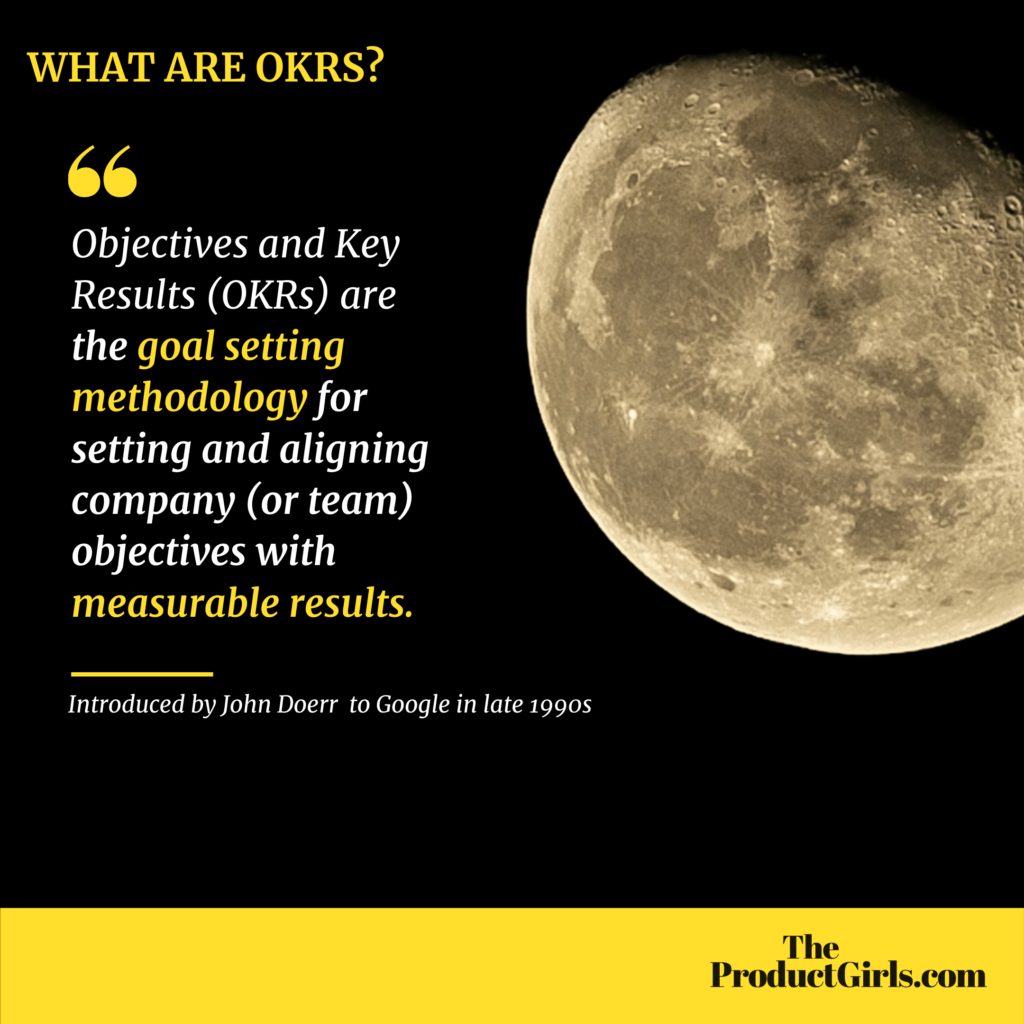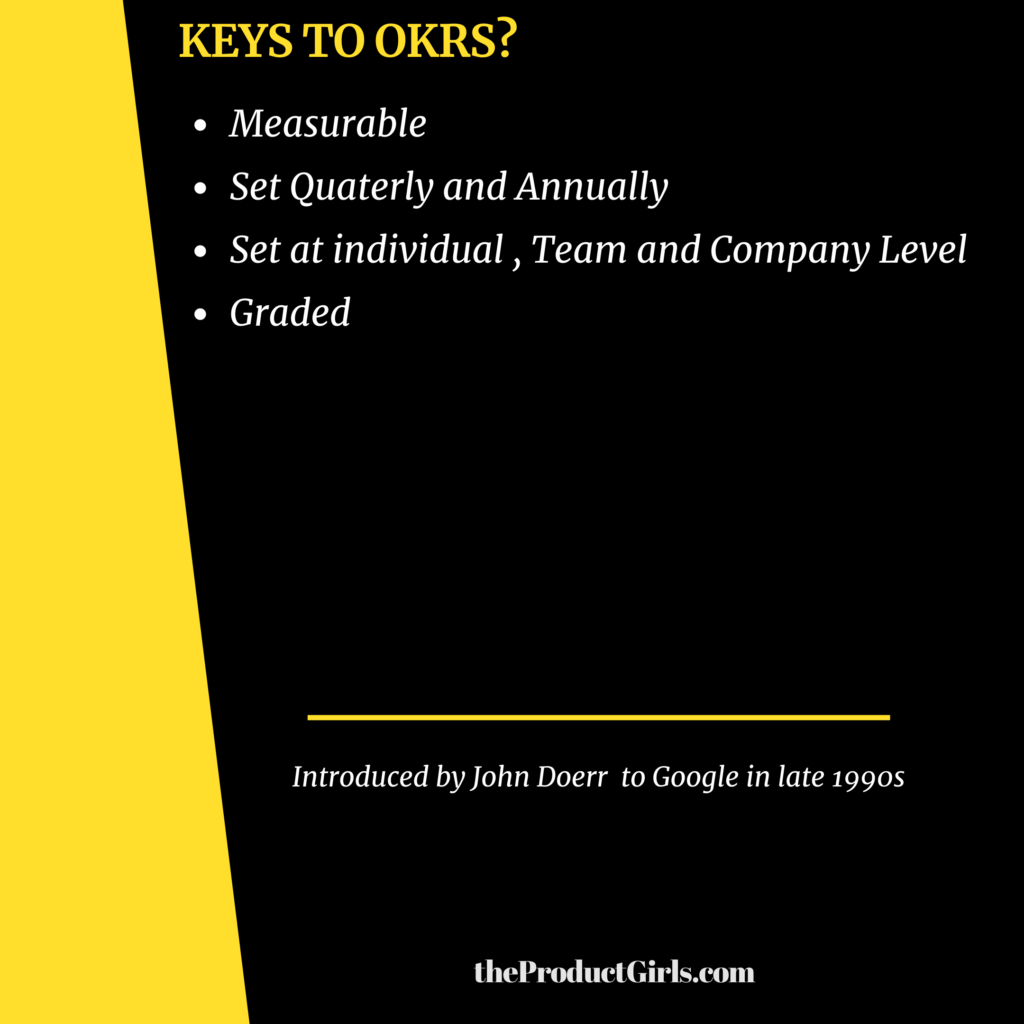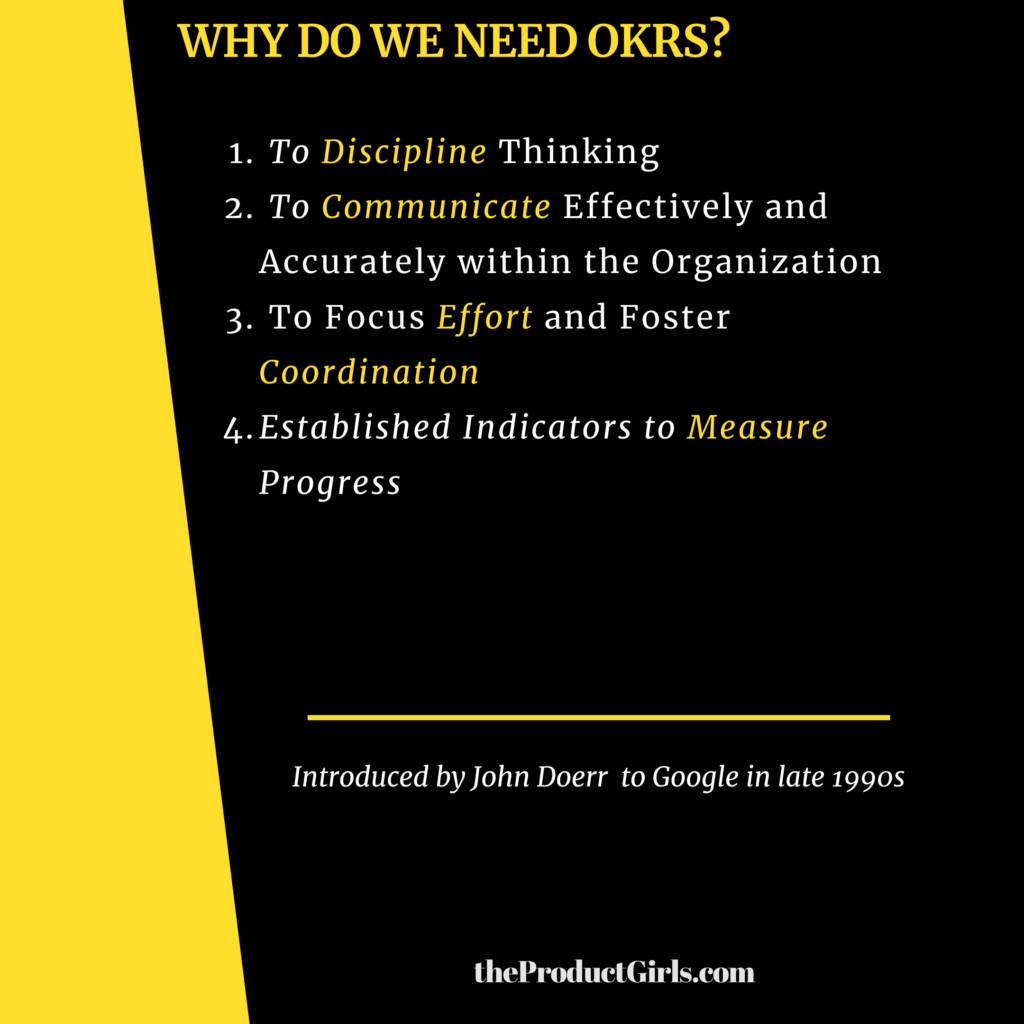Learn About Google OKRs (Objective & Key Results)
OKRs was initially introduced as iMBOs(Intel Management By Objectives) by Andy Grove at Intel, and he introduced the concept to John Doerr. In the late 90s, John Doerr presented OKRs to Google’s leadership when Google was less than a year old, and they’ve been in use since then.
GV partner Rick Klau covers the value of setting objectives and key results (OKRs) and how it’s practiced at Google since 1999 in this video. It is a highly recommended video for someone who wants to understand the OKRS and implement it in their organization. Have highlighted some of the concepts discussed in the video.
What are OKRs (Objective & Key Results)?
OKRs are the goal-setting methodology for setting and aligning company (or team) objectives with measurable results.
Example: Launch Gmail by Sep and have a million users by Nov
- Objective: Launch Gmail
- Key Results: by Sep with million users by Nov
Note: It’s not a Key Results unless it’s a number. In the example above, “by Sep” and “million users by Nov” are measurable.
Why Do we need OKRs (Objective & Key Results)?
- To Discipline Thinking ( To set and understand the priorities aligned with the Organization OKRs)
- To Communicate Effectively and Accurately within the Organization
- (Helps to understand and communicate What am I working on and why? Also, make cautious decisions on the priorities am not working on)
- To Measure progress by establishing Indicators in the form of Key Results
- To Focus Effort and Foster Coordination (Helps to make mission-driven teams where Everyone is aligned, being transparent about the priorities and working towards the same Result)
What are the Best Practices to Set OKRs (Objective & Key Results)
- Maximum 5 Objectives with 4 Key Results
- More than half of the Objectives should come up from BOTTOM UP
- OKRs should be
- Measurable
- Set Quarterly and Annually
- Set at the individual, team, and company levels
- Personal OKRs define what the person is working on?
- Team OKRs define priorities of the team, not just the collection of all individual OKRs
- Company OKRs signifies the top-level focus of the company
- Graded (0.7-1 is considered DELIVERED and below 0.0 to 0.3 is RED)
- OKRs should be Publicly available to the entire company
- OKRs Should be a little uncomfortable, so you are always striving
- OKRs are not related or an element in performance evaluation
- Should Continue Incomplete OKRs only if they are still important
What are the Key Elements to OKRs (Objective & Key Results)?
The Objective
- Is ambitious
- Feels a tad uncomfortable, so you are always striving
The Key Results
- Makes the objective achievable
- Measurable and quantifiable
- Lead to objectives grading



If you are interested in understanding and learning about it more, I recommend the book Measure What Matters by John Doerr. I hope you enjoy learning about OKRs. You can Connect with me on Twitter or Linkedin
To get the latest Product Management blogs and NEWS delivered to your Inbox. JOIN THE NEWSLETTER